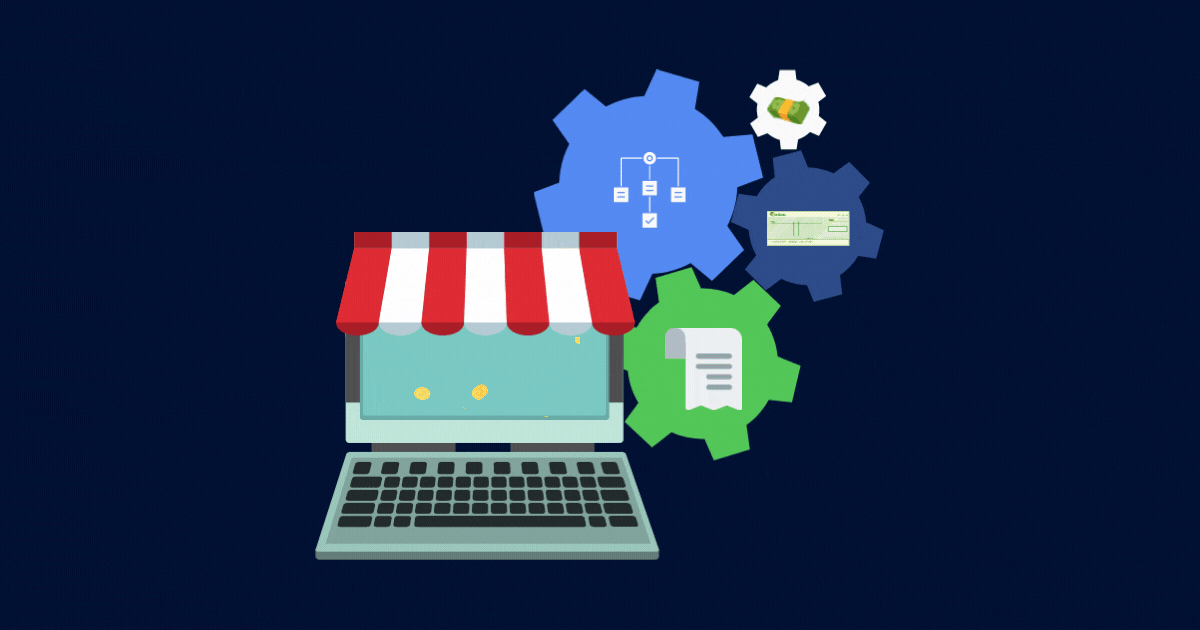
How much cash flow should a business have? The answer might be the best protection against the unavoidable roller coaster ups and downs, sudden turns and whipsaw twists of running a business.
Knowledge is not only power. Insights into your cash flow can be the best protection for navigating the tricky terrain of business.
Takeaways
- How much cash flow a business should have
- Why cash flow is crucial to a company’s success
- 7 ways cash flow forecasts can help businesses thrive
- 5 symptoms of poor cash flow
- 3 strategies for preventing cash flow problems
- What a P&L budget and cash flow forecast will tell you about the health of your business
Shortcuts
- What is business cash flow?
- What are the three primary categories of cash flow?
- Why is cash flow important for business?
- What is the Rule of 72 in finance?
- How much cash flow should a business have?
- How to determine if your business requires three or six months' worth of operating expenses in cash on hand
- What is a good cash flow position?
- What is a cash position, and how does it differ from cash flow?
- Why are cash flow forecasts important to businesses?
- How does cash flow forecasting differ from a profit and loss (P&L) budget?
- How can a business prevent cash flow problems?
- 5 Symptoms of common cash flow problems
- The most common cash flow problems small businesses face
What is business cash flow?
Business cash flow refers to the net balance of cash (a company’s total cash minus its total liabilities) moving into and out of a business at a specific point in time.
Business cash flow can be positive or negative. Positive cash flow shows more money moving into a company than out of it. Negative cash flow shows more money moving out of a company than into it.
In practice, business cash flow is when your customers actually pay you and when you must pay your bills. Cash flow statements show the net change in your company's cash position from one period to the next. You have a positive cash flow when you take in more cash than you send out. You have a negative cash flow when you're paying more bills, payroll, and interest than you're bringing in. Cash flow is a crucial indicator of financial health.
What are the three primary categories of cash flow?
1. Operating cash flow
Operating cash flow is net cash generated from a company's regular business operations.
2. Investing cash flow
Investing cash flow is net cash generated from a company's investment-related activities: investments in securities, purchase of physical assets like equipment or property, or the sale of assets.
3. Financing cash flow
Financing cash flow is how cash moves between a company and its investors, owners, or creditors. It’s the net cash generated to finance the company and may include debt, equity, and dividend payments.
Why is cash flow important for business?
Businesses that manage their cash flow successfully can meet their current financial obligations and plan for the future. Balancing the inflows and outflows of cash ensures the smooth day-to-day running of your business while building sufficient reserves to overcome gaps in sales, late invoice payments, or unexpected expenses.
Positive cash flow is essential for actively growing companies to maintain their business growth. Not being able to pay your bills because of cash flow problems can harm your relationship with suppliers and damage your overall reputation.
Plooto smooths out cash flow, reduces AR headache, and so much more. For modern businesses running in the cloud, Plooto is a must!
Think Accounting
Related Reading: How do you manage cash flow in business?
What is the Rule of 72 in finance?
The Rule of 72 is a simple way to calculate how long an investment will take to double given a fixed annual interest rate. By dividing 72 by the annual rate of return, investors can estimate how many years it will take for the initial investment to duplicate itself.
How much cash flow should a business have?
Typically, a business should have a cash buffer of three to six months' worth of operating expenses — the regular day-to-day costs of running a business. However, this amount depends on many factors: the industry, what stage the company is in, its goals, and access to funding.
How to determine if your business requires three or six months’ worth of operating expenses in cash on hand
The Mile IQ team offers these tips for figuring out how many months of cash on hand are right for your business:
1. Consider your business operations.
Do you run a year-round or seasonal basis? A year-round business with stable expenses can often keep more in cash reserves. A seasonal business may find it easier to keep less cash on hand.
2. Identify your business stage.
Is your business new or established? It's often more challenging for a fledgling firm to shore up its cash reserves than for a long-running business.
3. Determine your expectations for growth.
A company in rapid growth often needs more cash to meet its growing commitments.
4. Examine your future expenditures.
Do you have any big purchases planned over the next 12 to 24 months? You may need to keep more in reserves as the buy may consume a large chunk of cash.
5. Measure your confidence in customers or clients.
How confident are you that the clients or customers you have today will be there tomorrow? Can your business take the hit if you lose one or more of them? Your answer should dictate how many months of cash you keep on hand.
What is a good cash flow position?
A cash flow position refers to an organization's level of cash relative to its liabilities. A stable cash position enables a company to cover its current liabilities with a combination of cash and liquid assets. A company with a healthy cash position beyond its current liabilities shows financial strength.
What is a cash position, and how does it differ from cash flow?
The cash position represents the amount of cash that the company has on hand at that moment in time. Cash flow refers to the net change resulting from inflows and outflows of cash over time.
Why are cash flow forecasts important to businesses?
Cash flow forecasting enables businesses to track future cash performance by analyzing upcoming income and expenses. Analyzing future income includes assessing the source and probability of realizing it. Forecasting helps the company understand its financial position moving forward, enabling it to identify potential shortfalls.
Cash flow forecasts help businesses:
- Make informed business decisions
- Plan for change and growth
- Understand the impact of future plans
- Keep track of overdue payments
- Plan for potential cash gaps
- Manage surplus cash
- Monitor whether spending is on target
How does cash flow forecasting differ from a profit and loss (P&L) budget?
Your P&L budget is your business’s financial plan, including income and expenditures. The P&L budget shows how much profit or loss the business is planning to make.
The critical difference between a budget and a forecast: the P&L budget helps you understand whether your business is profitable. In contrast, the cash flow forecast will help you determine the amount of cash left with you by the end of the month.
The P&L budget acts as a map for where a business wants to go; the forecast shows where it is going.
Related Reading: How do small businesses deal with cash flow problems?
How can a business prevent cash flow problems?
1. Make cash flow forecasting a habit
Accurate, up-to-date cash flow forecasts cut through the fog of uncertainty in business.
2. Check monthly your projections to what's happening with the business
Doing this will enable you to better forecast how much cash in hand you’ll need a week, a month, or a year moving forward.
3. Prepare multiple cash flow projections
A proven strategy to protect the business from unpleasant surprises is to prepare three different forecasts:
-
- A best-case scenario
- A worst-case scenario
- An in-between option
It's critical you look at how the business is performing today and how the industry is evolving: new market trends, new competitors, changing needs of current customers and prospects.
5 Symptoms of common cash flow problems
1. Rising number of unpaid bills
Your receivables continue to rise, but you're not collecting more cash. To determine how good a job your business is doing in collecting its accounts receivables, calculate your accounts receivables turnover:
💡 Accounts Receivables Turnover = Net Annual Credit Sales ÷ Average Accounts Receivables
2. High inventory is tying up the company's cash
Until you sell your inventory items, you don't have liquid cash available to pay your bills. If you continue to have high inventory and low sales volume, you'll have cash flow problems.
3. Failing to plan for a manageable growth rate
Overextending your company could tie up a lot of your cash in capital and operating expenses. This scenario leaves the business with a smaller buffer to handle unexpected expenses. Reviewing your cash flow statement will help provide you with a more robust picture of where your business is and where it’s heading.
4. Declining sales: Falling sales over a few quarters may indicate imminent cash flow problems
To improve sales, you might want to adjust your strategy or your expense budget.
5. More is going out than coming in
It doesn't take a business wizard to know that if your cash outflow is greater than your cash inflow, you will have cash flow problems. If you're in this situation, it might be time to rethink your business model — the plan your business has for making money — to see how it can be changed to enhance profitability. Also, consider raising prices as another means to increase profitability.
The most common cash flow problems small businesses face
- Underestimating startup costs
- Expecting profitability too quickly
- Failing to create a cash flow budget
- Overlooking high overhead costs
- Collecting receivables too slowly
- Growing too quickly
- Low-profit margins
- Over-investment in fixed assets
- Unexpected changes
- Slow collection of accounts receivables
- Overestimating future growth
- Bad Pricing Model
- Poor Employee Management
- Inadequate cash reserves
- Difficulties in obtaining financing
- Not planning for seasonal challenges
Cash flow management
In good times and bad, short- and long-term success in business is a constant cycle of challenge and response, of planning, executing, and evaluating. Understanding the ins and outs of your business and your cash flow plays a critical role in your company's sustainability and whether it can expand, innovate, and continue — even in bad times.
Plooto's digital AP/AR solution with system-wide integration helps you stay ahead of your cash flow. You can time your payments to better manage your cash. You can track invoices and know when your clients pay. In addition, Plooto's accounts receivable invoice automation gives you clear insight into your pending, completed, and new receivables — all from one place.
The cash flow statement informs the company’s short- and long-term planning. But it can do much more -- predict future cash flow, eliminate waste, reduce expenses, provide insight into spending activities, and identify opportunities to create additional cash - as revealed in “Why Are Cash Flow Statements Important for Business?.”
CHAPTERS
00 The Complete Guide to Cash Flow Management for your Business
01 How Do You Manage Cash Flow in Business?
02 How Much Cash Flow Should a Business Have?













